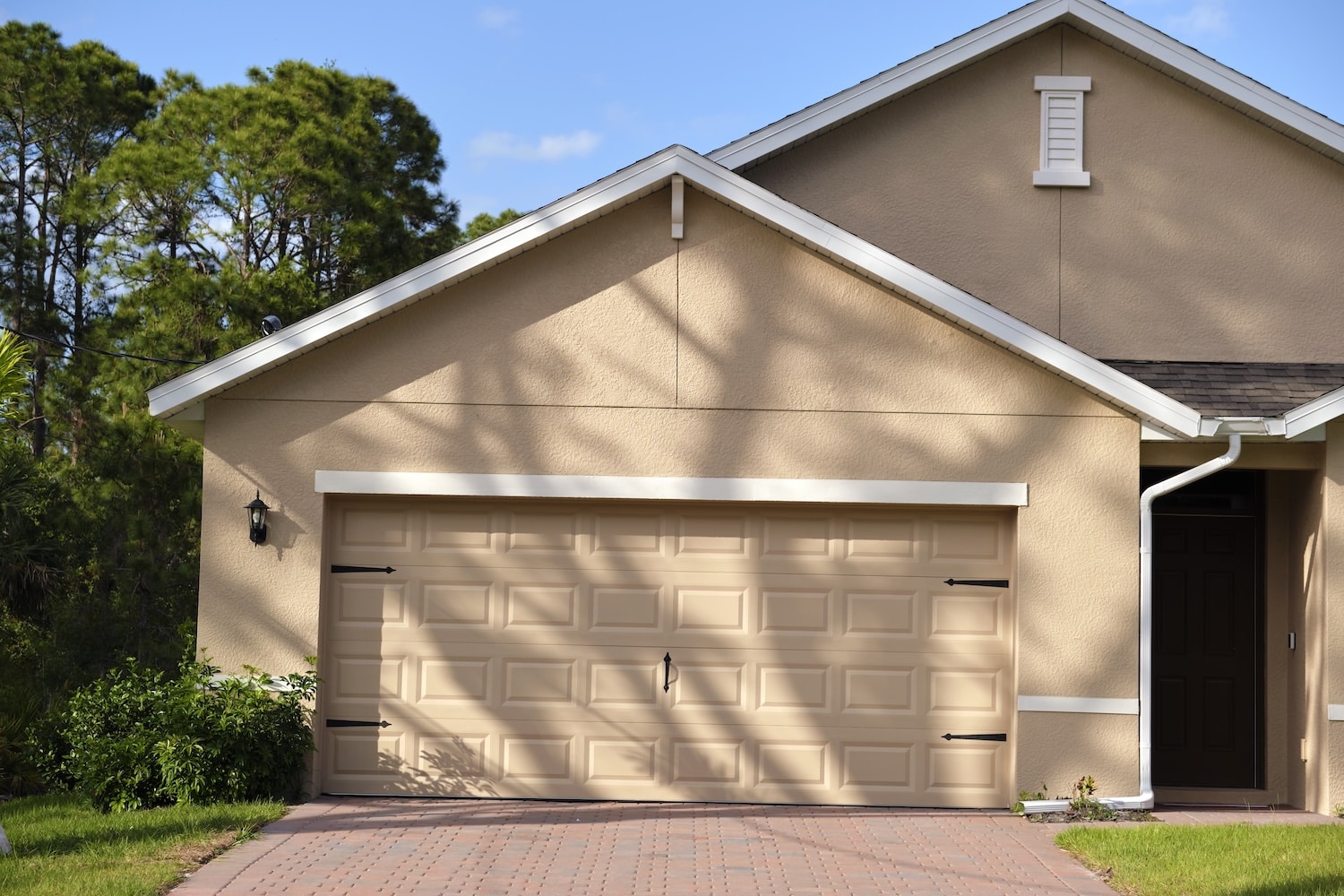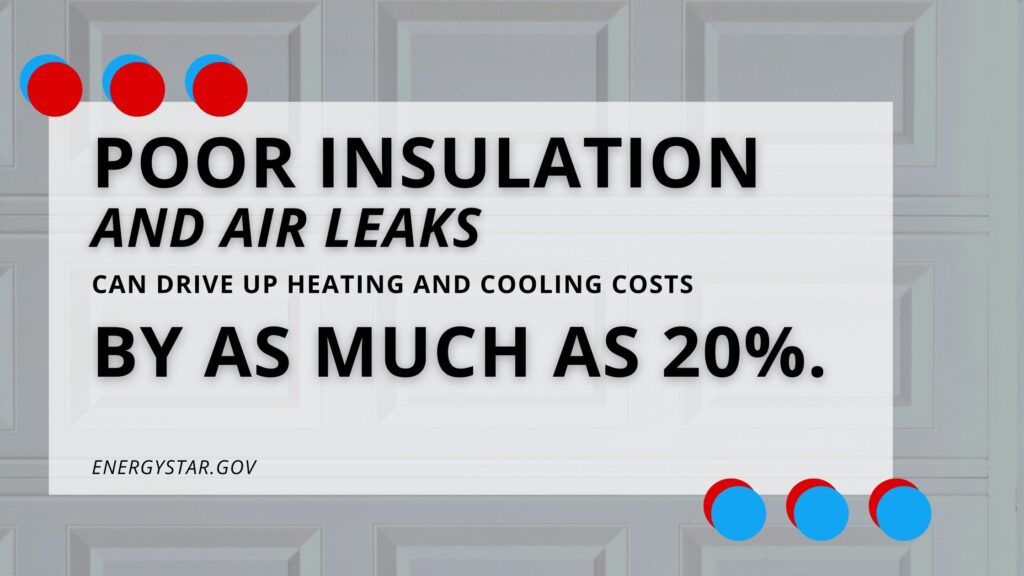
If your garage feels hotter than it should or has a lingering musty smell, insulation alone may not be the problem. Many homes in coastal areas like Houston have a garage with insulating measures in place, but bad ventilation. When your insulation blocks airflow or traps humidity, it can create bigger issues than it solves.
Let’s walk through how to check whether your garage’s current setup is helping or hurting airflow, and what signs suggest it’s time to make a few changes.
Does Your Garage Insulation Make the Cut?
Most garages aren’t climate-controlled, so they rely on insulation and airflow to stay functional. Over time, insulation can shift, degrade, or become ineffective due to moisture or poor installation.
Check for these red flags:
- Hot spots on walls or ceilings in the afternoon
- Water stains, warped wood, or soft drywall
- Drafts near doors or windows
- Insulation that is exposed, damaged, or falling
If your insulation hasn’t been inspected in a few years, or if you’ve noticed a change in temperature or humidity, it may no longer be working as intended. Poor insulation and air leaks can actually drive up heating and cooling costs by as much as 20%.

Is Airflow Getting Blocked?
Insulating a garage is important, but not at the expense of ventilation. If airflow gets blocked, moisture can build up behind walls and ceilings. This creates a perfect environment for mold and mildew.
Common issues to look for:
- Covered soffit vents or wall vents
- Sealed attic hatches with no ventilation above
- Storage items pushed against vented walls
- No exhaust fan or cross-ventilation options
You should feel a slight exchange of air when you open the garage. If it feels stagnant or damp, airflow is likely restricted.
The Garage Door
Your garage door plays a big role in insulating and controling temperatures. If it’s not insulated properly or has damaged seals, it can let in hot air or trap moisture. But a properly insulated garage door can reduce heat transfer by as much as 90%.
Do a quick check for:
- Cracked or detached insulation panels
- Missing or worn weatherstripping
- Moisture or rust buildup along the bottom edge
In some cases, adding small vents to the garage door can help improve airflow without reducing energy efficiency.
Attic Space Above the Garage
If your garage has an attic or loft above it, poor airflow there can affect the space below. Heat rises into the attic and pushes down into the garage if there’s no way for it to escape.
Inspect these areas:
- Look for ridge or gable vents in the attic
- Make sure insulation hasn’t been packed over any vent openings
- Check if the attic feels hotter than the rest of the home
Even if the insulation is intact, blocked vents in the attic can reduce the overall performance of your garage system.
Subtle Signs of Poor Airflow
Not all garage issues are obvious. These small indicators usually point to a hidden problem with ventilation or insulation:
- Musty odor, especially after rain
- Peeling paint or rusted tools
- Condensation inside storage bins or cabinets
- Higher utility bills if the garage is attached to your home
If you’re noticing any of these symptoms, it’s worth getting an inspection to identify what’s going on behind the walls.
Extra Tips
Good insulation and ventilation are important, but garage comfort often depends on a combination of small systems working together.
Regular upkeep helps prevent heat, moisture, and energy loss from affecting your home. Here are a few areas homeowners often overlook:
1. Dehumidifiers
- Use a dehumidifier in the summer months if your garage tends to hold moisture.
- Empty and clean the unit regularly to prevent mold inside the machine itself.
2. Door and Window Seals
- Replace worn weatherstripping once a year.
- Check thresholds for air leaks and water intrusion after heavy storms.
3. Ceiling Fans or Exhaust Fans
- Make sure vents are not covered by storage or insulation.
- Run fans consistently during peak heat and humidity.
- Clean fan blades and vents quarterly to remove dust buildup.
4. Annual Safety Inspection
- Check outlets and electrical boxes for signs of moisture or corrosion.
- Look for insect nests or rodent damage around vents and insulation.
- Scan for sagging drywall or ceiling cracks caused by heat or humidity stress.
These small tasks can go a long way in preserving insulation quality, reducing moisture damage, and keeping your garage safe and usable throughout the year.
When to Bring in a Professional
Issues isulating or ventilating a garage often go unnoticed until damage has already started. A professional home inspector can help identify where air is getting trapped, where moisture is collecting, and whether insulation needs to be repaired or removed.
An inspection will typically include:
- Checking the age and condition of insulation
- Evaluating air circulation in the attic and garage space
- Inspecting doors, vents, and sealing points
- Identifying any moisture-related risks or damage
All Coast Home Inspections regularly evaluates garages in coastal homes throughout Houston and surrounding areas. We understand how quickly heat and humidity can affect comfort, safety, and even resale value.
Conclusion
Insulating a garage only works if your ventilation can keep up. If your space feels hotter, mustier, or more humid than it used to, it’s time to take a closer look.
With a few smart updates or a professional inspection, you can get your garage back to a comfortable, safe, and functional space year-round.



